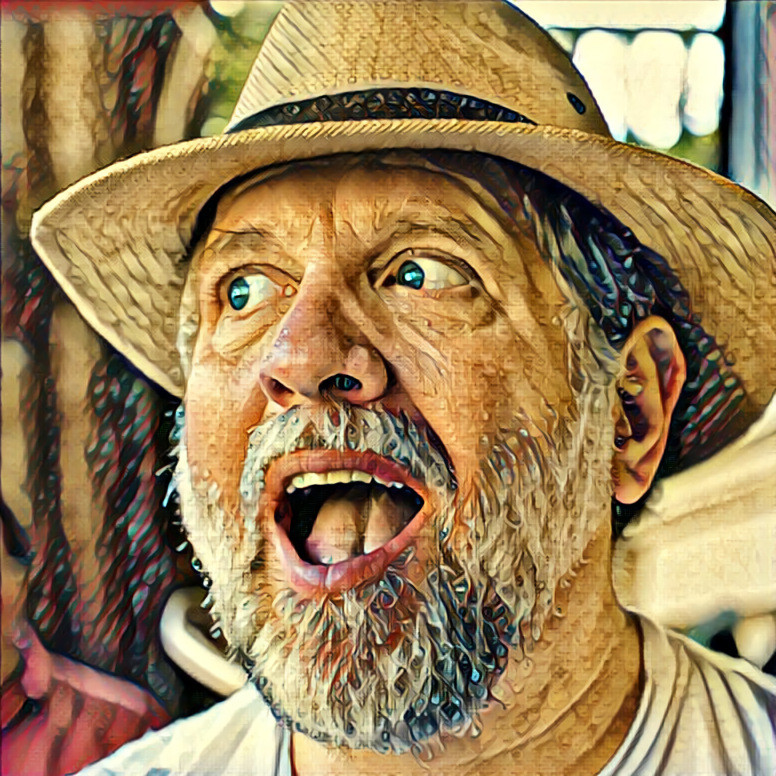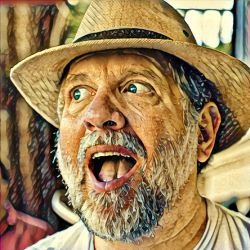Home > Topics > Equipment & Techniques > Cameras, Lenses and Shooting Gear > Exposure Technique for Mirrorless using Zebras
Exposure Technique for Mirrorless using Zebras
Tagged: exposure, Mirrorless, zebras
-
AuthorTopic: Exposure Technique for Mirrorless using Zebras Read 1692 Times
-
Cameras, Lenses and Shooting Gearon: December 5, 2020 at 4:03 pm
There has been some recent PhotoPXL forum discussion on exposure techniques. I’m posting this here because it is specific to mirrorless cameras. The goal is to expose for the highlights, that is, increase exposure to the point that the highlights just touch the clipping level. ETTR is a technique for achieving that goal.
Another technique uses zebras. I learned about this from a Mark Galer Video for the A7iii and A7Riii cameras, but I expect the technique will work for other mirrorless cameras as well. Don’t use the standard zebra settings, which are for videography. Galer uses custom C1 or C2 settings. Set type to Lower Limit, and the value to 109+. That’s right, the zebras light up beyond the 100% clipping level. Galer argues that highlight recovery in post-processing will work well in the 100-109% range, but he encourages us to experiment with lower values as well. You increase exposure until the zebras just appear and then maybe back off a 1/3 stop.
Yes, these cameras will display a live histogram. In my experience, the real-time histogram does not match well with the playback RGB histograms (or the post-processing histogram). I have not gotten good ETTR results with it. Galer also points out that the live histogram doesn’t tell you where the clipping occurs. Your tolerance of clipping may differ for different parts of the image.
Galer has ebooks on customizing settings for Sony mirrorless cameras here. They are free, but he does ask for a donation – give the man a few bucks!
JSS
Re: Exposure Technique for Mirrorless using ZebrasReply #1 on: December 6, 2020 at 2:00 pmThis is really interesting. It’s commonly believed that mirrorless live histograms/blinkies/zebras are based on the data from the camera’s highly downsampled and processed EVF video feed. This zebra trick implies, at least on Sony cameras, that these live zebra warnings are based on data from earlier in the EVF image processing pipeline, which is potentially huge news for raw shooters desiring realtime exposure warnings.Sadly I don’t have a Sony camera to test this. It would be really informative if someone shot a static scene with a bright highlight with progressively increasing zebra warning levels, and compared those zebra warnings to the actual RawDigger histograms. The impact of different picture profiles and white balances on these zebra warnings set beyond 100% would be especially interesting.Edit: My comments above made the naive assumption that 100% = clipping in the processed video feed and that any value above 100% must indicate the zebras are based on unprocessed data.
After some googling I’ve found that the zebra percentages are likely in IRE units where 100% merely represents a maximum “safe” white value for a TV broadcast. Apparently it is common in video capture to go above 100% and that is only loosely correlated with clipping.
-
This reply was modified 3 years, 7 months ago by
 Brian Kimball.
Brian Kimball.
-
This reply was modified 3 years, 7 months ago by
 Brian Kimball.
Brian Kimball.
Re: Exposure Technique for Mirrorless using ZebrasReply #2 on: December 6, 2020 at 2:31 pmThis is really interesting. It’s commonly believed that mirrorless live histograms/blinkies/zebras are based on the data from the camera’s highly downsampled and processed EVF video feed. This zebra trick implies, at least on Sony cameras, that these live zebra warnings are based on data from earlier in the EVF image processing pipeline, which is potentially huge news for raw shooters desiring real-time exposure warnings.
I can’t say where in the processing pipe where the zebra is thresholded – and Sony is not likely going to tell us. As has been discussed on the other thread, it would be nice if we had exposure tools based on RAW data. Since zebras are primarily videography, I suspect they too are calculated from EVF. In addition, we don’t know if the zebra is triggered when any one of the color channels clips, or is it a threshold on a brightness value derived from the RGB channels. Of course, we want the former, but we likely get the latter.
JSS
Re: Exposure Technique for Mirrorless using ZebrasReply #3 on: December 6, 2020 at 2:42 pmThis is really interesting. It’s commonly believed that mirrorless live histograms/blinkies/zebras are based on the data from the camera’s highly downsampled and processed EVF video feed. This zebra trick implies, at least on Sony cameras, that these live zebra warnings are based on data from earlier in the EVF image processing pipeline, which is potentially huge news for raw shooters desiring real-time exposure warnings.
I can’t say where in the processing pipe where the zebra is thresholded – and Sony is not likely going to tell us. As has been discussed on the other thread, it would be nice if we had exposure tools based on RAW data. Since zebras are primarily videography, I suspect they too are calculated from EVF. In addition, we don’t know if the zebra is triggered when any one of the color channels clips, or is it a threshold on a brightness value derived from the RGB channels. Of course, we want the former, but we likely get the latter.
Sorry, I edited/retracted most of my post right as you responded. Looks like zebra clipping values are based on old TV broadcast standards where 100% represents maximum safe white for broadcast, not any kind of processed still-photo clipping.
Agreed, they are still likely based solely off the processed & downsampled EVF video feed.
Re: Exposure Technique for Mirrorless using ZebrasReply #4 on: December 6, 2020 at 5:36 pmAgreed, they are still likely based solely on the processed & downsampled EVF video feed.
I read the Sony and Wikipedia article – thanks. It’s definitely not the RAW exposure tool we really need – and that the camera manufacturers should provide. IRE seems to be an analog standard, but these things tend to get migrated into the digital domain whether it makes sense or not (e.g.: ISO). Regardless, it is based on the RBG EVF stream. Still, the method could be useful possibly in conjunction with the real-time histogram.
JSS
-
This reply was modified 3 years, 7 months ago by
 John Sadowsky.
John Sadowsky.
Re: Exposure Technique for Mirrorless using ZebrasReply #5 on: December 30, 2020 at 11:07 pmWhat is the point of the histogram when we have highlight warnings (zebras or blinkies)? For ETTR, there is less information in histogram than in highlights warnings. With highlight warnings, we can see whether relevant highlights are being clipped, which we cannot with histograms.
Highlight warnings can be more intrusive than histograms, but some cameras enable highlight warnings only with a half-press.
Re: Exposure Technique for Mirrorless using ZebrasReply #6 on: December 31, 2020 at 8:40 amWhat is the point of the histogram when we have highlight warnings (zebras or blinkies)? For ETTR, there is less information in histogram than in highlights warnings. With highlight warnings, we can see whether relevant highlights are being clipped, which we cannot with histograms. Highlight warnings can be more intrusive than histograms, but some cameras enable highlight warnings only with a half-press.
Srdjan, I generally agree with you. I’m going to take this opportunity to summarize two points from several posts by various authors on multiple threads (specifically the thread on the “optimum exposure” article).
First, the goal of good digital exposure is to expose for highlights – meaning increase the exposure to the point that the highlights are on the verge of clipping. ETTR refers to pushing the histogram to the right. That is simply a technique for achieving the goal of exposure for highlights. Exposure warnings such as zebras and blinkies are other tools to achieve the same goal. Such tools may or may not be available, in real-time or in post-capture review, depending on your camera. My opinion is that there is no optimal solution – it is a matter of what works for you and your equipment.
The histogram spans the top 6-7 stops of the camera’s dynamic range, but we only need to know if we are approaching highlight clipping. So, in principle, histograms provide more “information” than is needed. That brings us to the second issue – is this true in practice?
Clipping occurs on raw data – specifically data at the ADC (analog-to-digital converter) in the sensor’s native color space, which is definitely not sRGB or Adobe RGB. Yet, as far as I can tell, all of the in-camera exposure tools are based on data that has been transformed from the native color space to 8-bit sRGB or Adobe RGB previews, or for the viewfinder feed (which is further quantized) and reduced to a single gray-scale channel. How does this data tell us that saturation has occurred on the raw data? Not very well! It is a matter of mathematics that the raw data may be clipped, but after transformation sRGB data is not, or vice-versa. I have searched manufacturer literature, reviews, and other technical articles (albeit not an exhaustive search), and I have not found any evidence to suggest that any in-camera exposure tools provide raw data channel clipping information. (I have seen some posts claiming otherwise for particulars, but I have not been about to verify such claims.) That’s the real problem. No exposure technique will be perfect unless it is based on raw data.
The best we can do is understand the limitations of RGB-preview-based exposure info and the pros and cons of various techniques (ETTR vs. zebras), and pick the one that works best for you.
I’ve been using Mark Galen’s zebra method for a while now, and it is working pretty well. As noted in my original post, I set the limit to 109+, which means that when the zebras pop up I’m definitely over-exposing. I generally don’t see them for well-exposed images, so I don’t find them to be distracting or intrusive (as you say). But again – the best method is the one that works for you.
JSS
-
This reply was modified 3 years, 7 months ago by
-
AuthorPosts
- You must be logged in to reply to this topic.



